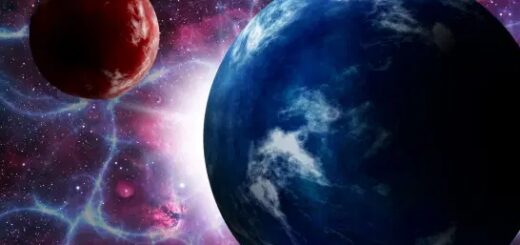Earth-like alien planets could experience ‘snowball states’

Earth-like planets with severe tilts and orbits could enter abrupt “snowball states,” in which entire oceans freeze and surface life cannot survive, according to new research.
Researchers at the University of Washington (UW) have found a new reason why, just because a planet is located in a “habitable zone” — meaning it’s close enough to its host star to sustain liquid water — it isn’t necessarily habitable. The team found that the axial tilt and orbital dynamics of planets in the habitable zone around “G dwarf” stars like our own sun can lead to “snowball states,” which are essentially extreme ice ages.
This new research looked at how a planet’s obliquity, or the angle at which a planet’s rotation axis tilts, and its orbital eccentricity, a parameter that determines the amount that an orbit deviates from a perfect circle, could affect that planet’s potential to be habitable. [How Habitable Zones Around Stars Work (Infographic)]
Previous research suggested that planets in a habitable zone with a sun-like star that had a severe axial tilt or tilting orbit would be warmer, according to the statement. The team’s research found that the opposite holds true, which was quite a shock, they said.”We found that planets in the habitable zone could abruptly enter ‘snowball’ states if the eccentricity or the semi-major axis variations — changes in the distance between a planet and star over an orbit — were large or if the planet’s obliquity increased beyond 35 degrees,” Russell Deitrick, lead author of the new work and a postdoctoral researcher at the University of Bern who completed this research at UW, said in a statement.
More From Space.com
Earth-like planets
How Habitable Zones Around Stars Work (Infographic)
Luckily, Earth’s axial tilt varies ever so slightly, leaving Earth “a relatively calm planet, climate-wise,” co-author Rory Barnes, an astronomer at UW, said in the statement. But, as it pertains to exoplanets, Deitrick “has essentially shown that ice ages on exoplanets can be much more severe than on Earth, that orbital dynamics can be a major driver of habitability and that the habitable zone is insufficient to characterize a planet’s habitability,” Barnes said.
A planet’s position in the habitable zone is typically a major factor in considering whether it may be habitable. However, this new research shows that even if a planet seems Earth-like and is orbiting at the right distance from its star, if “its orbit and obliquity oscillate like crazy, another planet might be better for follow-up with telescopes of the future,” Deitrick said.
With this research in mind, orbital dynamics should be considered an important part of determining a planet’s habitability, Deitrick added.
The work will be published in The Astronomical Journal, according to the statement



 Creators of mankind
Creators of mankind Description of “Tall white aliens”
Description of “Tall white aliens” Where they came from?
Where they came from? About hostile civilizations
About hostile civilizations The war for the Earth
The war for the Earth “Tall white aliens” about eternal life
“Tall white aliens” about eternal life Video: “Nordic aliens”
Video: “Nordic aliens” Aliens
Aliens Alien encounters
Alien encounters The aliens base
The aliens base UFO
UFO Technology UFO
Technology UFO Underground civilization
Underground civilization Ancient alien artifacts
Ancient alien artifacts Military and UFO
Military and UFO Mysteries and hypotheses
Mysteries and hypotheses Scientific facts
Scientific facts


















